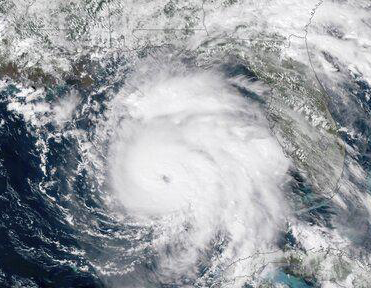
Hurricane Michael in the Gulf of Mexico in October 2018. NOAA recently upgraded Michael from a Category 4 storm to a Category 5, making Michael only the fourth tropical cyclone on record to hit the U.S. as a Category 5 hurricane. (Image credit: NOAA)
A cyclone is a general term for a weather system in which winds rotate inwardly to an area of low atmospheric pressure.
For large weather systems, the circulation pattern is in a counterclockwise direction in the Northern Hemisphere and a clockwise direction in the Southern Hemisphere.
Types of cyclones include tropical cyclones, extratropical cyclones and tornadoes.
A tropical cyclone is a rotating low-pressure weather system that has organized thunderstorms but no fronts. They form over warm ocean waters.
Tropical cyclones with maximum sustained surface winds of less than 39 mph are called tropical depressions. Those with maximum sustained winds of 39 mph or higher are called tropical storms. When a storm’s maximum sustained winds reach 74 mph they are called hurricanes or typhoons. Hurricanes form over the Atlantic Ocean or Caribbean Sea; typhoons form over the western Pacific Ocean.
Extratropical cyclones are low-pressure systems that form outside of the tropics in response to a chronic instability of the westerly winds. Because this instability is dependent on large horizontal temperature contrasts, concentrated regions of temperature change known as fronts characterize extratropical cyclones.
These storms populate the middle and high latitudes, north of 35 degrees latitude in the Northern Hemisphere, and thus they also are called “mid-latitude cyclones.” If the barometric pressure of a mid-latitude cyclone falls by at least 1 millibar per hour for 24 hours, the storm is referred to as a “bomb cyclone.”
A tornado is a rapidly rotating column of air extending downward from a thunderstorm to the ground. The most violent tornadoes are capable of tremendous destruction with wind speeds of up to 300 mph.
Tornadoes form in regions of the atmosphere that have abundant warm and moist air near the surface with drier air above, and a change in wind speed and wind direction with height above the ground.

